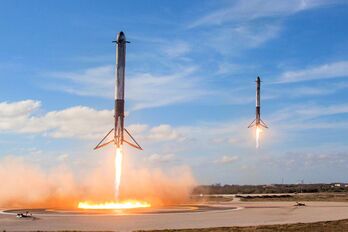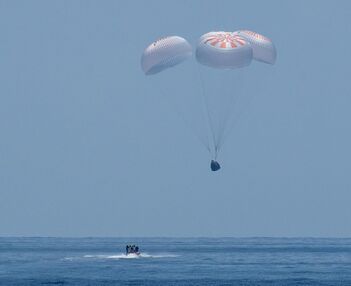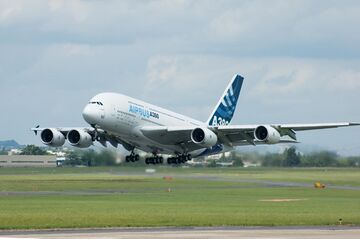Engineering:Soft landing
From HandWiki
Short description: Landing that does not result in significant damage to the vehicle or its payload
This article relies largely or entirely on a single source. (June 2025) |
A soft landing is any type of aircraft, rocket or spacecraft landing that does not result in significant damage to or destruction of the vehicle or its payload, as opposed to a hard landing. The average vertical speed of a soft landing (on Earth) should be about 2 meters (6.6 ft) per second or less.[1] On other astronomical bodies with weaker gravity, the safe speed could potentially be higher.

A soft landing can be achieved by
- Parachute—often this is into water.
- Vertical rocket power using retrorockets, often referred to as VTVL (vertical landing referred to as VTOL, is usually for aircraft landing in a level attitude, rather than rockets) — first achieved on a suborbital trajectory by Bell Rocket Belt and on an orbital trajectory by the Surveyor 1.
- Horizontal landing, most aircraft and some spacecraft, such as the Space Shuttle, land this way accompanied with a parachute.
- Being caught in midair, as done with Corona spy satellites and followed by some other form of landing.
- Reducing landing speed by impact with the body's surface, known as lithobraking.


See also
References
- ↑ Sreedhar, Vidya (2023-08-23). "Chandrayaan-3 Effect! These 7 space-related stocks scale 52-week highs". The Economic Times. ISSN 0013-0389. https://economictimes.indiatimes.com/markets/stocks/news/chandrayaan-3-effect-these-7-space-related-stocks-scale-52-week-highs/articleshow/102983461.cms?from=mdr.
 |
